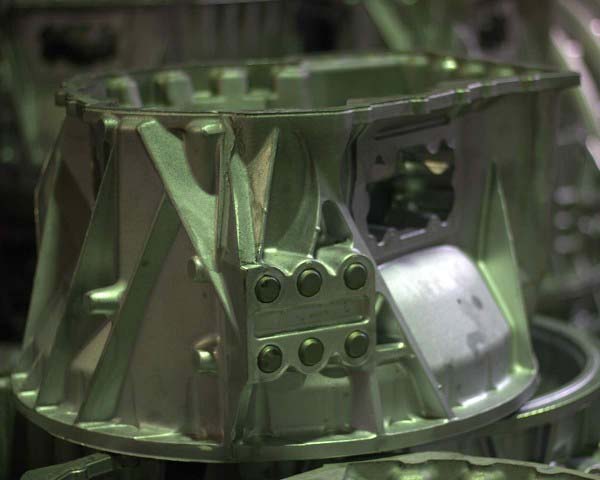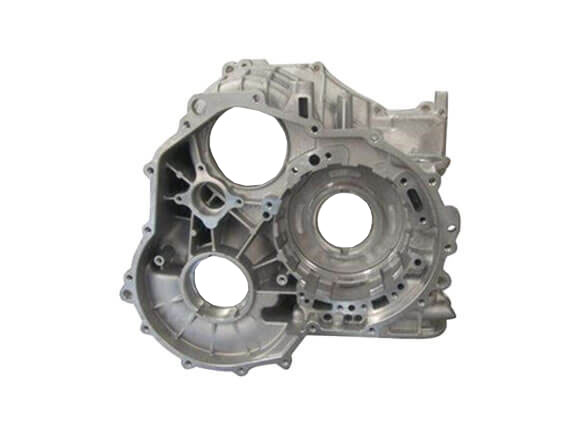A Comprehensive Tutorial to Precision aluminum casting for Designers
Aluminum Casting Explained: Trick Truths and Insights for Industry Professionals
Aluminum casting serves as a crucial process in modern-day manufacturing, forming components across different sectors. Its varied approaches, such as sand and die casting, deal with various manufacturing needs. The special buildings of aluminum alloys improve their applicability, yet tests continue to be in maintaining quality and effectiveness. Understanding these facets is essential for market experts. What are the most recent developments and finest methods that can further enhance this process?
Introduction of Aluminum Casting Processes

Secret components of aluminum casting processes include the preparation of mold and mildews, which might be made from sand, metal, or ceramic materials, depending upon the planned use. Furthermore, temperature level control is vital to guarantee correct melting and solidification of aluminum.
The casting process enables detailed layouts and can accomplish high levels of dimensional precision. As soon as cooled, the spreadings might undertake finishing procedures such as machining or surface treatment to fulfill certain efficiency requirements. Overall, aluminum casting acts as a functional production method, effectively meeting the varied needs of numerous sectors.
Kinds Of Aluminum Casting Methods
In the domain of aluminum casting, different methods are employed to achieve various results. Sand casting methods offer adaptability and cost-effectiveness for complicated forms, while die casting processes offer high accuracy and efficiency for automation. Comprehending these approaches is important for picking the ideal technique based on job needs.
Sand Casting Methods
Sand casting strategies represent an essential method in aluminum casting, where sand is used as a mold product to shape liquified steel. This process includes creating a pattern from the wanted part, which is after that positioned in a sand mixture to develop a mold and mildew. The sand is compressed around the pattern, and after elimination, it produces a cavity in the shape of the part. Molten aluminum is poured into this dental caries, permitting it to cool and solidify. One considerable benefit of sand casting is its versatility; it can suit large elements and complicated shapes. Additionally, the materials used are relatively inexpensive, making it an available option for different manufacturing applications in the aluminum market.
Die Casting Processes
Die casting processes are a prominent technique for forming aluminum components, making use of high-pressure methods to force molten metal right into precisely crafted molds. This process is especially favored for its capability to create complicated shapes with tight resistances and a smooth coating. There are 2 main sorts of die casting: hot chamber and chilly chamber. Hot chamber die casting is suitable for metals with reduced melting factors, enabling faster production rates. Conversely, cold chamber die casting is suitable for greater melting factor metals, requiring a separate melting heater. Both approaches enhance effectiveness and decrease material waste, making them essential in auto, aerospace, and durable goods markets. Comprehending these processes helps professionals pick one of the most suitable technique for their specific applications.
Product Feature of Aluminum Alloys

Toughness and Sturdiness
Toughness and sturdiness are crucial qualities of aluminum alloys that make them suitable for numerous casting applications. These materials exhibit a desirable strength-to-weight ratio, allowing for the development of light-weight yet robust parts. With respect to tensile stamina, specific aluminum alloys can be engineered to hold up against significant tons without warping. This property is particularly vital in sectors such as aerospace and automotive, where performance and safety are paramount. In addition, aluminum alloys frequently keep their mechanical homes under diverse temperature conditions, making certain constant efficiency. The innate ductility of these alloys likewise enables for reliable shaping throughout the casting procedure, making it easier to produce intricate geometries. In general, the toughness and sturdiness of aluminum alloys contribute significantly to their widespread use in advanced applications.
Deterioration Resistance Characteristics
While aluminum alloys are treasured for their toughness and light-weight properties, their deterioration resistance is one more important quality that enhances their viability for numerous applications. Aluminum normally creates a protective oxide layer when exposed to dampness, which assists to avoid further oxidation. This inherent residential or commercial property makes aluminum alloys particularly valuable in settings susceptible to corrosion, such as industrial and aquatic settings. In addition, different alloy structures can influence resistance degrees, with specific alloys specifically crafted to enhance this characteristic. Treatments like plating can even more boost rust resistance by enlarging the oxide layer. As a result, recognizing the rust resistance of aluminum my sources alloys is vital for industry specialists when selecting products for tasks needing sturdiness and long life in difficult settings.
Advantages of Aluminum Casting in Manufacturing
Aluminum casting offers various benefits in production, making it a favored choice for numerous sectors. One significant advantage is its light-weight nature, which adds to minimized transport prices and boosted energy performance in end products. Aluminum's exceptional thermal and electric conductivity boosts capability in applications calling for heat dissipation or electrical conduction.
The material's capability to be cast into complex forms enables for style adaptability, lowering the demand for added machining procedures. On top of that, aluminum casting shows premium deterioration resistance, leading to longer product lifespans and lower maintenance prices.

Typical Applications of Aluminum Castings
The adaptability of aluminum casting allows its widespread usage throughout various markets. Usual applications consist of auto components, where lightweight and corrosion-resistant parts, such as engine blocks and transmission housings, enhance automobile efficiency. In the aerospace sector, aluminum castings are made use of for structural elements, offering toughness without adding considerable weight.
In addition, the electric industry gain from aluminum spreadings in making enclosures and warm sinks, where thermal conductivity is essential. The durable goods sector also includes aluminum castings in products like cooking equipment, furniture, and attractive products, incorporating looks with capability.
The construction industry employs aluminum castings for building components, home window structures, and components, which supply toughness and style flexibility. Generally, the diverse applications of aluminum castings highlight their value in modern-day manufacturing, adding to innovations in performance and product design throughout numerous fields.
Developments and Technical Advancements
As markets proceed to advance, technologies in aluminum casting innovation are transforming manufacturing processes and product capacities. Improvements in 3D printing and additive manufacturing have allowed the creation of intricate geometries that were formerly difficult to achieve with standard approaches. These modern technologies enable for fast prototyping, lowering lead times and expenses.
Additionally, enhancements in mold and mildew layout and materials have boosted the casting procedure by increasing performance and lowering waste. The assimilation of smart production techniques, such as IoT devices and real-time information analytics, enables for far better monitoring and optimization of manufacturing parameters, causing higher quality outputs.
Furthermore, growths in aluminum alloys supply boosted strength, rust resistance, and light-weight residential properties, catering to the growing demands in vehicle and aerospace industries. Collectively, these technologies are not just boosting productivity yet also fulfilling the extensive criteria of contemporary design applications.
Best Practices for Top Quality Control in Aluminum Casting
Making sure top notch outcomes in aluminum casting requires adherence to finest practices that include different stages of the production procedure. Initially, comprehensive product evaluation is necessary to verify the top quality of my site aluminum alloys made use of, as contaminations can significantly impact the final item. Executing accurate melting and pouring strategies lessens flaws; maintaining suitable temperatures avoids oxidation and promotes harmony.
Mold and mildew style plays an important function; utilizing computer-aided design (CAD) can enhance accuracy and reduce human error. Routine surveillance of the cooling procedure is essential to avoid bending and contraction. Additionally, using non-destructive testing approaches, such as ultrasonic or X-ray examinations, assists determine inner flaws without harming the elements.
Finally, developing a feedback loophole with drivers and designers promotes constant renovation, making sure that quality assurance procedures evolve alongside technological improvements. By following these finest methods, suppliers can enhance the integrity and efficiency of aluminum castings.
Often Asked Inquiries
What Are the Ecological Effects of Aluminum Casting?
The environmental impacts of aluminum casting consist of significant power consumption, greenhouse gas discharges, and possible water air pollution from shop procedures. Additionally, bauxite mining for aluminum ore can lead to habitat damage and soil degradation.
Exactly How Does Aluminum Casting Compare to Other Metal Casting Procedures?
Aluminum casting this article usually offers advantages in lightweight elements and deterioration resistance contrasted to various other processes, such as iron or steel casting, which may provide greater strength but cause much heavier and much less corrosion-resistant products. - aluminum casting
What Are Common Defects in Aluminum Castings and Their Causes?
Common flaws in aluminum spreadings consist of porosity, contraction, and additions. Causes frequently come from improper putting strategies, poor mold design, or contamination of the liquified steel, impacting the end product's stability and efficiency.
What Safety Precautions Should Be Taken Throughout Aluminum Casting?
Throughout aluminum casting, vital security preventative measures include wearing protective equipment, ensuring proper air flow, preserving a clean work space, handling liquified metal with treatment, and complying with established procedures to decrease threats of burns, inhalation threats, and crashes.
Just How Can I Enhance the Performance of My Aluminum Casting Operations?
To boost performance in aluminum casting operations, one must maximize mold and mildew design, enhance product handling, utilize automated processes, carry out regular upkeep on devices, and buy employee training to improve abilities and performance.
Numerous approaches exist, aluminum casting incorporates several main processes that provide to various applications and requirements. Key components of aluminum casting procedures consist of the preparation of mold and mildews, which might be made from sand, steel, or ceramic products, depending on the meant usage. Sand casting methods represent an essential technique in aluminum casting, where sand is utilized as a mold material to shape liquified metal. As industries proceed to advance, technologies in aluminum casting modern technology are transforming manufacturing processes and product capacities. Guaranteeing premium outputs in aluminum casting requires adherence to best methods that encompass numerous phases of the production procedure.